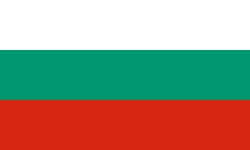Olympische Sommerspiele 1936/Radsport – Zeitfahren Bahn (Männer)
| Sportart | Radsport | ||||||||
| Disziplin | 1000 m Zeitfahren (Bahnradsport) | ||||||||
| Geschlecht | Männer | ||||||||
| Teilnehmer | 19 Athleten aus 19 Ländern | ||||||||
| Wettkampfort | Olympisches Radstadion | ||||||||
| Wettkampfphase | 8. August 1936 | ||||||||
| Siegerzeit | 1:12,0 min | ||||||||
| |||||||||
| |||||||||
| Radsportwettbewerbe bei den Olympischen Spielen 1936 | |
| Straßenrennen | Männer |
| Mannschaftswertung | Männer |
| Sprint | Männer |
| Zeitfahren | Männer |
| Tandem | Männer |
| Mannschaftsverfolgung | Männer |
Das 1000-m-Zeitfahren mit dem Bahnrad der Männer bei den Olympischen Spielen 1936 in Berlin fand am 8. August im Olympischen Radstadion statt. Olympiasieger wurde der Niederländer Arie van Vliet.
Ergebnisse
| Rang | Athlet | Nation | Zeit |
|---|---|---|---|
| 1 | Arie van Vliet | 1:12,0 min (OR) | |
| 2 | Pierre Georget | 1:12,8 min | |
| 3 | Rudolf Karsch | 1:13,2 min | |
| 4 | Benedetto Pola | 1:13,6 min | |
| 5 | Arne Pedersen | 1:14,0 min | |
| László Orczán | 1:14,0 min | ||
| 7 | Ray Hicks | 1:14,8 min | |
| 8 | George Giles | 1:15,0 min | |
| Eduard Baumann | 1:15,0 min | ||
| 10 | Al Sellinger | 1:15,2 min | |
| 11 | Tassy Johnson | 1:15,8 min | |
| 12 | Frans Cools | 1:16,0 min | |
| 13 | Alfred Mohr | 1:16,4 min | |
| 14 | Harry Haraldsen | 1:16,8 min | |
| 15 | Bob McLeod | 1:17,0 min | |
| Ted Clayton | 1:17,0 min | ||
| 17 | Jonas Persson | 1:17,2 min | |
| 18 | Thor Porko | 1:18,2 min | |
| Boris Dimitrow | DNF |
Weblinks
Auf dieser Seite verwendete Medien
Olympic Rings without "rims" (gaps between the rings), As used, eg. in the logos of the 2008 and 2016 Olympics. The colour scheme applied here was specified in 2023 guidelines.
Olympic Rings without "rims" (gaps between the rings), As used, eg. in the logos of the 2008 and 2016 Olympics. The colour scheme applied here was specified in 2023 guidelines.
Autor/Urheber: B1mbo, Lizenz: CC BY-SA 2.5
Zeichnung einer Goldmedaille, basierend auf Olympic rings.svg.
Autor/Urheber: B1mbo, Lizenz: CC BY-SA 2.5
Zeichnung einer Silbermedaille, basierend auf Olympic rings.svg.
Autor/Urheber: B1mbo, Lizenz: CC BY-SA 2.5
Zeichnung einer Bronzemedaille, basierend auf Olympic rings.svg.
National- und Handelsflagge des Deutschen Reiches von 1935 bis 1945, zugleich Gösch der Kriegsschiffe.
Das Hakenkreuz ist im Vergleich zur Parteiflagge der NSDAP um 1/20 zum Mast hin versetzt.
National- und Handelsflagge des Deutschen Reiches von 1935 bis 1945, zugleich Gösch der Kriegsschiffe.
Das Hakenkreuz ist im Vergleich zur Parteiflagge der NSDAP um 1/20 zum Mast hin versetzt.
Pictograms of Olympic sports - Cycling (road). This is unofficial sample picture. Images of official Olympic pictograms for 1948 Summer Olympics and all Summer Olympics since 1964 can be found in corresponding Official Reports.
Pictograms of Olympic sports - Cycling (track). This is unofficial sample picture. Images of official Olympic pictograms for 1948 Summer Olympics and all Summer Olympics since 1964 can be found in corresponding Official Reports.
Autor/Urheber: F l a n k e r, Lizenz: CC BY-SA 2.5
Flagge des Königreich Italiens (1861-1946) In einem staatlichem oder militärischem Kontext ist die Version mit der Krone zu verwenden.
Autor/Urheber: F l a n k e r, Lizenz: CC BY-SA 2.5
Flagge des Königreich Italiens (1861-1946) In einem staatlichem oder militärischem Kontext ist die Version mit der Krone zu verwenden.
Flag of Hungary from 6 November 1915 to 29 November 1918 and from August 1919 until mid/late 1946.
Flagge des Vereinigten Königreichs in der Proportion 3:5, ausschließlich an Land verwendet. Auf See beträgt das richtige Verhältnis 1:2.
Flagge des Vereinigten Königreichs in der Proportion 3:5, ausschließlich an Land verwendet. Auf See beträgt das richtige Verhältnis 1:2.
Die quadratische Nationalfahne der Schweiz, in transparentem rechteckigem (2:3) Feld.
Flag of Australia, when congruence with this colour chart is required (i.e. when a "less bright" version is needed).
See Flag of Australia.svg for main file information.(c) David Liuzzo, CC BY-SA 3.0
State flag of Austria from 1934 to 1938.
The Canadian Red Ensign used between 1921 and 1957.
This image has compared for accuracy (mainly colors) using an image from World Statesmen. The only change is making the maple leaves green from red. This image has compared for accuracy (mainly colors) using an image from World Statesmen. The most recent version of this image has changed the harp into one with a female figure; see [http://flagspot.net/flags/ca-1921.html FOTW
The Canadian Red Ensign used between 1921 and 1957.
This image has compared for accuracy (mainly colors) using an image from World Statesmen. The only change is making the maple leaves green from red. This image has compared for accuracy (mainly colors) using an image from World Statesmen. The most recent version of this image has changed the harp into one with a female figure; see [http://flagspot.net/flags/ca-1921.html FOTW
Flag of South Africa, used between 1928 and 1982. It is identical to the 1982 to 1994 version except that the shade of blue is darker. It is also known as the "Oranje-Blanje-Blou".
Flag of South Africa, used between 1928 and 1982. It is identical to the 1982 to 1994 version except that the shade of blue is darker. It is also known as the "Oranje-Blanje-Blou".
Flag of Hungary from 6 November 1915 to 29 November 1918 and from August 1919 until mid/late 1946.
Sport records icon to be used for Olympic records.























